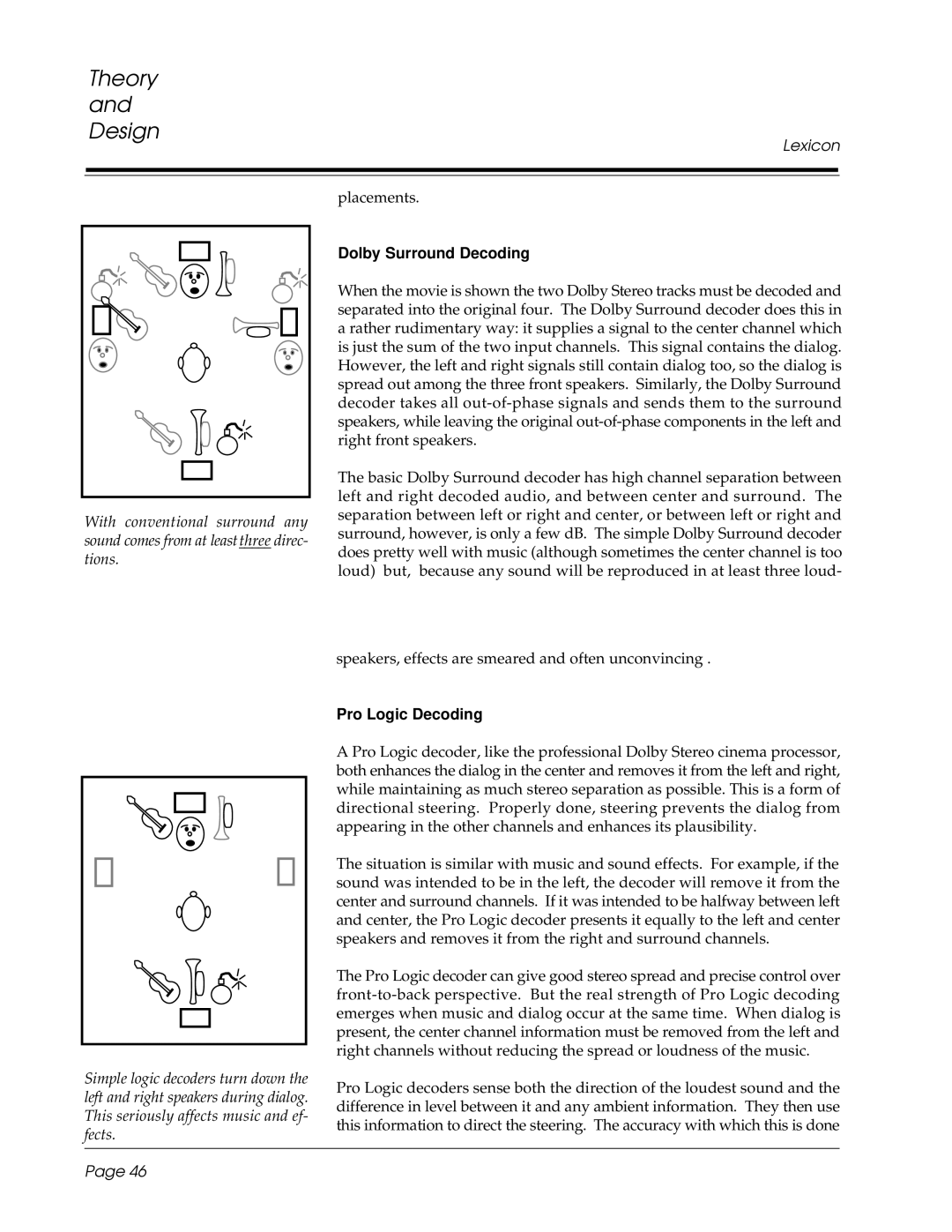
Theory and Design
Lexicon
placements.
With conventional surround any sound comes from at leastthree direc- tions.
Dolby Surround Decoding
When the movie is shown the two Dolby Stereo tracks must be decoded and separated into the original four. The Dolby Surround decoder does this in a rather rudimentary way: it supplies a signal to the center channel which is just the sum of the two input channels. This signal contains the dialog. However, the left and right signals still contain dialog too, so the dialog is spread out among the three front speakers. Similarly, the Dolby Surround decoder takes all
The basic Dolby Surround decoder has high channel separation between left and right decoded audio, and between center and surround. The separation between left or right and center, or between left or right and surround, however, is only a few dB. The simple Dolby Surround decoder does pretty well with music (although sometimes the center channel is too loud) but, because any sound will be reproduced in at least three loud-
speakers, effects are smeared and often unconvincing .
Simple logic decoders turn down the left and right speakers during dialog. This seriously affects music and ef- fects.
Pro Logic Decoding
A Pro Logic decoder, like the professional Dolby Stereo cinema processor, both enhances the dialog in the center and removes it from the left and right, while maintaining as much stereo separation as possible. This is a form of directional steering. Properly done, steering prevents the dialog from appearing in the other channels and enhances its plausibility.
The situation is similar with music and sound effects. For example, if the sound was intended to be in the left, the decoder will remove it from the center and surround channels. If it was intended to be halfway between left and center, the Pro Logic decoder presents it equally to the left and center speakers and removes it from the right and surround channels.
The Pro Logic decoder can give good stereo spread and precise control over
Pro Logic decoders sense both the direction of the loudest sound and the difference in level between it and any ambient information. They then use this information to direct the steering. The accuracy with which this is done
Page 46
